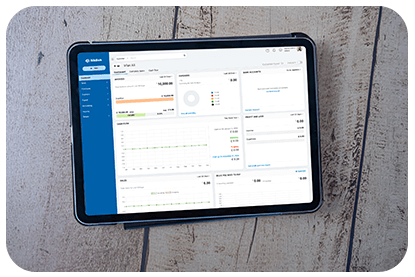19 April 2024
Discounted Cash Flow: A Key Method for Valuing Investment
Understanding Discounted Cash Flow (DCF)
Discounted Cash Flow (DCF) is a financial metric used to estimate the value of an investment based on its future cash flows. This method is widely used by investors and analysts to determine the present value of an asset by considering how much cash it will generate over time. By factoring in a discount rate, Discounted Cash Flow accounts for the time value of money, helping investors make informed decisions about the potential return on investment (ROI).
The Importance of Cash Flow in Investment Valuation
Cash flow is crucial for determining the viability of an investment. In its simplest form, cash flow refers to the movement of money in and out of a business or project. When calculating the DCF, understanding free cash flow (FCF) is essential. Free cash flow represents the cash that remains after a company has paid for its operating expenses and capital expenditures. It’s a key indicator of an organization’s ability to generate revenue and sustain growth. In the context of DCF, free cash flow helps provide a clearer picture of a business’s future earning potential.
How to Calculate Discounted Cash Flow
To calculate DCF, you’ll need to forecast the future cash flows of the business and then apply the DCF formula to determine their present value.
The formula for DCF is as follows: DCF=∑((1+r)tFCFt)
Where:
- FCFtFCF_tFCFt = Free cash flow at time ttt
- rrr = Discount rate (also known as the required rate of return)
- ttt = Time period (usually years)
This formula helps investors assess how much future cash flows are worth today. The higher the discount rate, the lower the present value of future cash flows. By applying this calculation, investors can determine whether an investment is undervalued or overvalued.
Key Variables in the DCF Formula
- Free Cash Flow (FCF): As mentioned earlier, free cash flow is a vital component of the DCF formula. It represents the cash that a company generates after accounting for capital expenditures, such as investments in property or equipment. This figure is crucial because it reflects the actual cash available to investors.
2. Discount Rate (r): The discount rate represents the return an investor expects to earn from an alternative investment of similar risk. This rate takes into account factors such as inflation, market conditions, and the risk associated with the investment. Choosing an appropriate discount rate is key to accurately evaluating an investment’s worth.
3. Time Period (t): The time period typically spans over several years. Forecasting future cash flows for multiple years allows for a comprehensive valuation. The further out you project, the less reliable the estimate becomes, making it important to regularly update your DCF analysis.
Using Discounted Cash Flow for Investment Decision Making
DCF analysis is a powerful tool for assessing investment opportunities, particularly in companies that generate steady and predictable cash flow. For example, using free cash flow as a basis for your DCF calculation provides a more accurate reflection of the company’s ability to sustain operations. If an investment shows a higher present value through DCF, it may indicate a good opportunity. Conversely, if the present value is lower than the current market value, the investment may be overpriced.
Practical Applications of DCF in Business Valuation
DCF is widely used in various fields, especially when valuing companies for mergers, acquisitions, or financial analysis. The method is particularly beneficial for long-term projects that involve predictable revenues. For instance, in real estate, DCF can help assess the profitability of a development project by estimating future rental income or property value increases.
Leveraging Accounting Software for Accurate DCF Calculations
To streamline DCF calculations, consider using accounting software such as QuickZeros Books. This software allows businesses to track and analyze their financials more effectively. By integrating free cash flow data into the system, QuickZeros can provide real-time insights into the company’s financial health. Moreover, it helps automate much of the DCF calculation process, allowing you to make faster, more accurate investment decisions.
Advantages of Using the DCF Method
- Objectivity: DCF analysis focuses on the financial performance of the business rather than market sentiment. This makes it a more reliable tool for long-term investment decisions.
- Flexibility: DCF can be applied to a wide range of investments, including stocks, real estate, and startups. It offers a flexible framework for evaluating both established and emerging companies.
- Time Value of Money: By factoring in the time value of money, DCF ensures that future cash flows are valued appropriately. This provides investors with a more realistic assessment of an investment’s potential.
Potential Drawbacks of DCF
While DCF is a widely respected method, it does have some drawbacks. One major limitation is the reliance on accurate cash flow projections. Overestimating future cash flows can lead to an inflated valuation. Additionally, the discount rate used in the formula can be subjective and varies depending on the investor’s risk appetite and market conditions.
Conclusion
Discounted Cash Flow (DCF) is a powerful method for valuing investments, especially when the future cash flow of the investment is predictable and reliable. By using the DCF formula, investors can determine the present value of future cash flows and make informed decisions about whether an investment is worth pursuing. With the help of accounting software like QuickZeros Books, these calculations become more efficient and accurate. However, it’s important to carefully consider the variables involved, including the discount rate and free cash flow, to ensure the investment decision is based on solid data.




